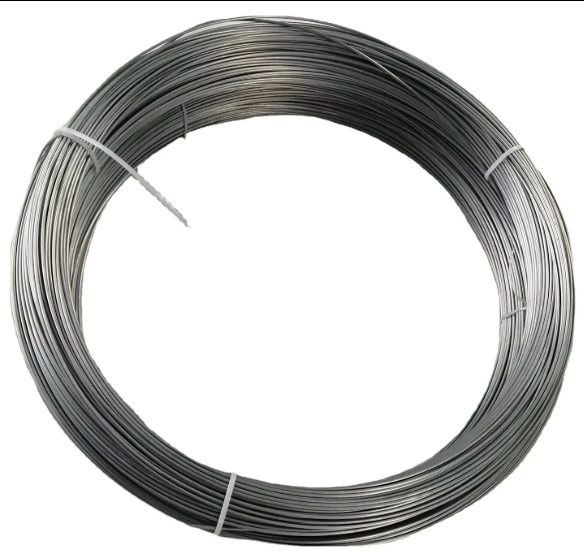Niobium Zirconium Alloy Wire, Rods, and Bars (Nb99Zr1)
Buy Niobium Zirconium Alloys (Nb-Zr), including wire, rod, tube, sheet, and custom alloy parts, at competitive prices for high-performance applications in aerospace, nuclear reactors, chemical processing, and superconducting materials. Our Nb-Zr alloys offer superior corrosion resistance, oxidation resistance, and thermal stability, making them ideal for fuel cladding, heat exchangers, high-temperature environments, and vacuum furnace components. Available in a variety of forms and specifications to meet your project requirements.
Material | Niobium Zirconium Alloy |
CAS Number | 12059-59-5 |
Standard | ASTM B392 |
Color/Appearance | Gray, Metallic |
| Density | 8.59 g/cm3 |
Melting Point | 2399 ℃ |
Diameter | Customized |
Surface Treatment | Pickling or Polishing |
Description of Niobium Zirconium alloy wire, rod, and bar
Niobium-Zirconium (Nb-Zr) Alloy Wire, Rod, and Bar are materials made from a combination of niobium and zirconium, typically in proportions such as 1% zirconium and 99% niobium. These products exhibit exceptional corrosion resistance, high-temperature strength, and oxidation resistance, making them ideal for use in extreme environments. The wire form is commonly used in superconducting applications, while rods and bars are used for structural components in nuclear reactors, aerospace, and chemical processing industries. These materials are fabricated into specific shapes and sizes, offering enhanced durability for applications requiring high radiation resistance, thermal stability, and mechanical strength.
Chemical Compositions of Niobium Zirconium alloy wire and rod
| Products | C | N | O | H | Zr | Ta | Fe | Si | W | Ni | Mo | Hf | Ti |
| Nb1Zr R04251 | 0.01 | 0.01 | 0.015 | 0.0015 | 0.8-1.2 | 0.1 | 0.005 | 0.005 | 0.03 | 0.005 | 0.01 | 0.02 | 0.02 |
| Nb1Zr R04261 | 0.01 | 0.01 | 0.025 | 0.0015 | 0.8-1.2 | 0.5 | 0.01 | 0.005 | 0.03 | 0.005 | 0.05 | 0.02 | 0.03 |
Standard/Grades of Niobium Zirconium alloy
| Products | Grade | Standard | Application |
| Nb1Zr | R04251 | ASTM B393 | Reactor Grade |
| Nb1Zr | R04261 | ASTM B393 | Industrial Grade |
Niobium Zirconium alloy Application
Niobium-Zirconium (Nb-Zr) alloy is a high-performance material known for its excellent high-temperature strength, corrosion resistance, and superconducting properties. It is widely used in nuclear reactors for fuel cladding and structural components due to its radiation resistance and stability in extreme environments. In aerospace and space applications, Nb-Zr is utilized in rocket nozzles and spacecraft components because of its high melting point (~2,468°C) and oxidation resistance in vacuum. The alloy also plays a crucial role in superconducting magnets and wires for MRI machines, particle accelerators, and fusion energy applications. Additionally, Nb-Zr is used in chemical processing, vacuum furnaces, and thin-film coatings for electronics due to its excellent corrosion resistance and thermal stability.
FAQ-Niobium Zirconium alloy
What is Niobium Zirconium (Nb-Zr) alloy?
Niobium Zirconium (Nb-Zr) alloy is a high-performance material composed of niobium (99%) and zirconium (typically 1%) that combines the unique properties of both metals. It is known for its exceptional high-temperature strength, corrosion resistance, and oxidation resistance in extreme environments.
What are the primary uses of Nb-Zr alloy?
Nb-Zr alloys are commonly used in nuclear reactors for fuel cladding and reactor components due to their radiation resistance. They are also used in superconducting magnets, aerospace propulsion systems, high-temperature furnace components, and chemical processing equipment.
What are the forms of Niobium Zirconium alloy available?
Niobium Zirconium alloy is available in various forms, including wire, rod, and bar. These forms are used for applications in superconducting materials, structural components, and high-temperature equipment.
Why is zirconium added to niobium in the alloy?
Zirconium is added to niobium to enhance its corrosion resistance and improve its high-temperature performance, especially in environments with high radiation or extreme thermal stress. It also increases the material’s oxidation resistance and mechanical strength.
What are the benefits of using Nb-Zr alloy in nuclear reactors?
Nb-Zr alloys are highly valued in nuclear reactors due to their resistance to neutron irradiation, corrosion resistance in high-temperature liquid metal coolants, and ability to maintain structural integrity under radiation exposure, making them ideal for fuel cladding and structural components.
Can Nb-Zr alloys be welded or machined?
Yes, Nb-Zr alloys can be welded and machined, although specialized techniques may be required due to their high strength and ductility. Techniques like electron beam welding and precision machining are often used for this material.

